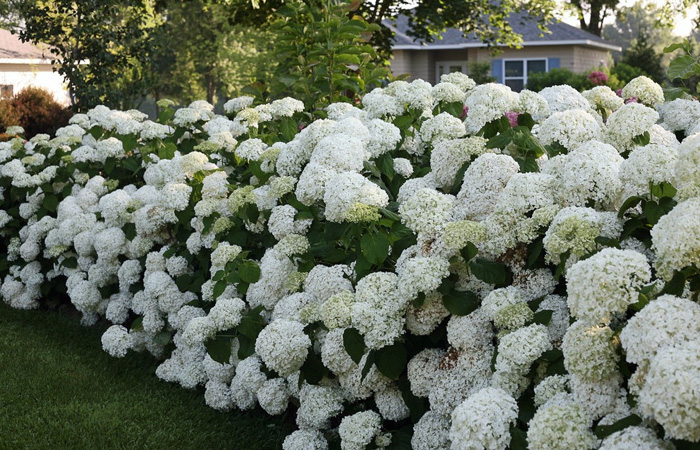Hydrangeas may be the most sought after and coveted plants we grow here on the prairies. With their long blooming season beginning in July and lasting until frost, it makes them highly desirable in landscapes. While Hydrangeas come in many shapes, sizes and colours, their needs remain largely the same and this can be a problem.
The trouble with Hydrangeas is finding a location for them that fits their specific needs. Hydrangeas are fond of sun but not heat. You can see how this can become a problem. Hydrangeas need between 4 and 6 hours of sun every day to grow properly. But if they receive too much heat the flowers can dehydrate and begin browning prematurely. They named the plant “Hydrangea” because of the importance of hydration.
Another factor to take into account when considering Hydrangeas is wind protection. Hydrangeas will not do well if exposed to too much wind. If they are in a windy location through summer they will dehydrate quickly. If they are exposed to north and west wind in winter they may suffer from frostbite and exposed branches will freeze.
With all of that being said, the east side of a fence or building is an ideal location for Hydrangeas. They can still receive their needed sunlight in the cool morning hours, and receive shade through the afternoon heat.
It is very helpful for Hydrangeas to be covered in snow through the winter to protect them from wind and frost. You can also use wood chip mulch, flax straw or fallen leaves as an insulator to protect the roots in winter.
In a previous blog I have discussed the Quickfire and Little Quickfire Hydrangea, from the Paniculata family. In this blog I want to draw attention to the Arborescens family. These are classically what people picture in their minds when you hear the word Hydrangea. Rounded clusters of blooms in shades of white, pink, purple and blue.
The most classic of all is the Annabelle Hydrangea. With white blooms 6 to 8 inches wide, customers often refer to it as the “snowball bush” when they do not know its true name. At mature size in Manitoba it will be between 2 and 4 feet tall and wide. It is the original and the most resilient of the Arborescens Hydrangeas that we have to work with today.
For the Annabelle, there have been some steps taken toward improvement. The Invincible Spirit II Hydrangea is quite comparable to the Annabelle in needs and dimensions, but with medium pink flowers.
Let’s say you were looking for something… bigger. Something to make a statement and draw attention. The Incrediball Hydrangea is what you are looking for! At maturity it will be between 4 and 5 feet tall and the white flowers can be over 12 inches wide!
If you want something with more colour there is also the Incrediball Blush Hydrangea. The flowers are just as large as the regular Incrediball but they are medium pink. This plant also has more sturdy stems and is more upright than most Arborescens. This is a helpful factor when you consider how heavy those big blooms can be. It is not uncommon for young Arborescens to create bigger flowers than they can support. Stems can often become floppy or even snap. The plant becomes stronger and learns to hold its head up better as it grows older. It is not a bad idea to support them while they are young by tying them up, or using tomato cages.
I have been collecting as many different Hydrangeas as I can to bring more colour into my yard. I currently have one of each Hydrangea we sell planted in my yard somewhere, and I am looking forward to seeing what new varieties come to us in the future!




